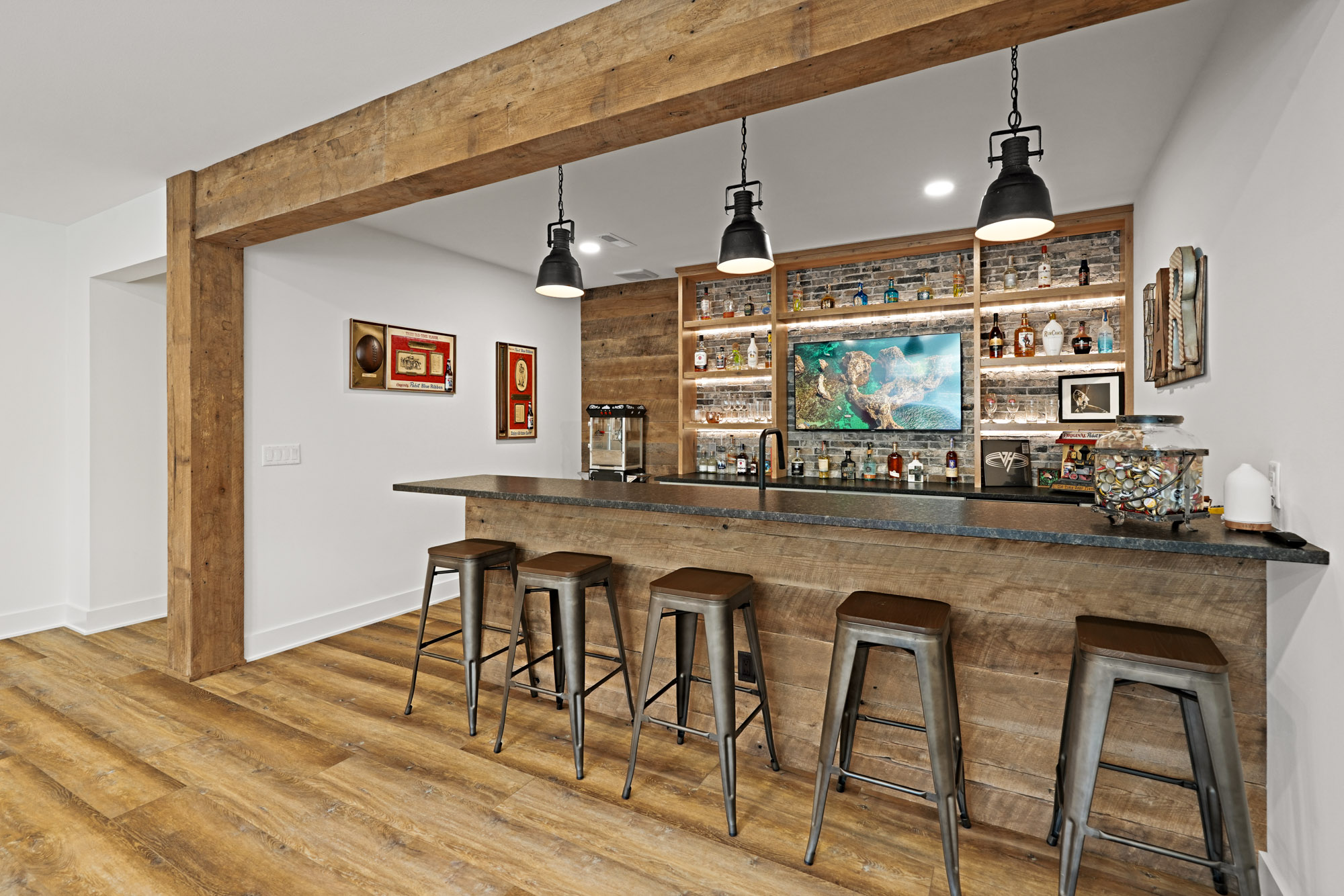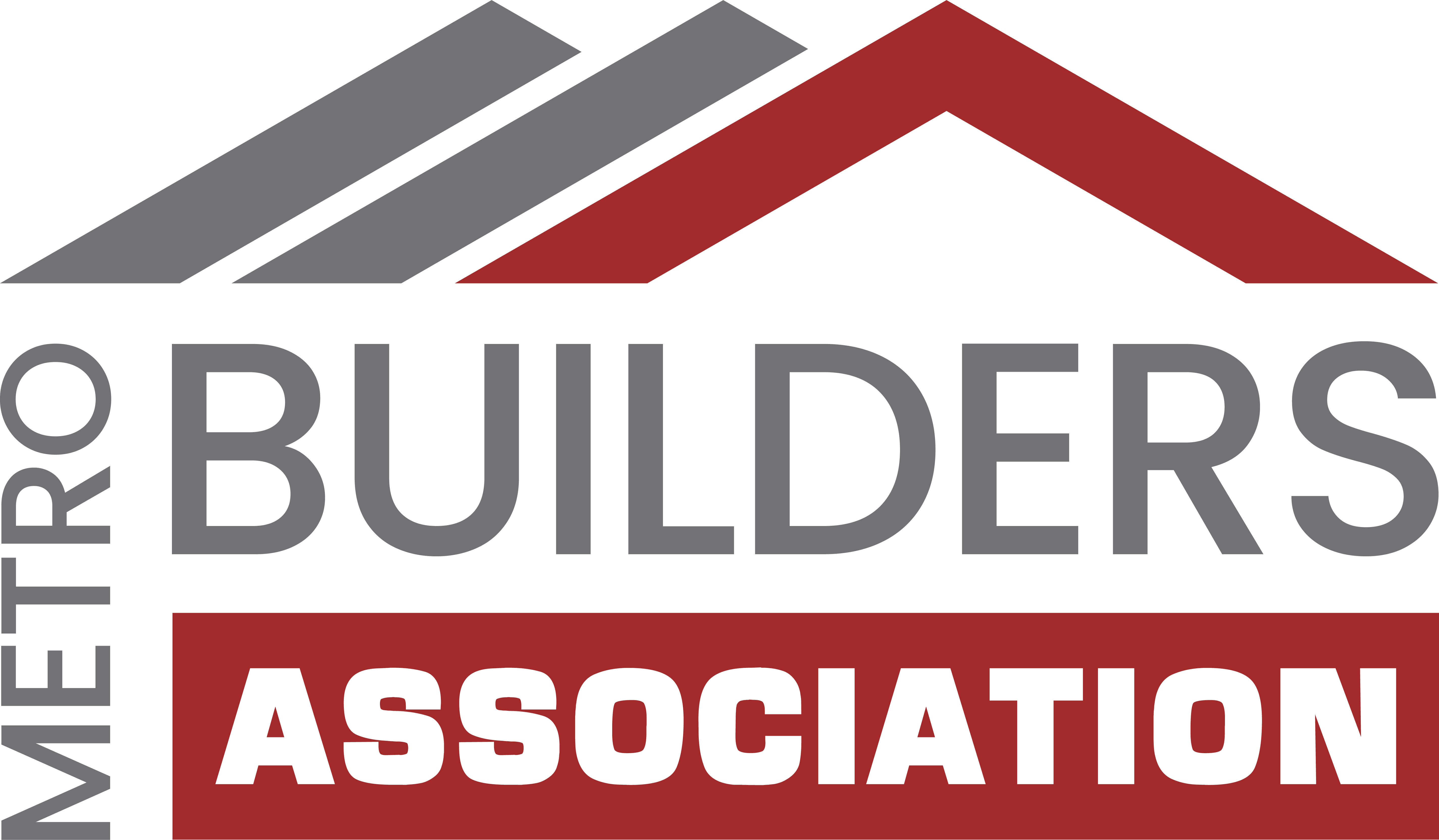Build a Calmer House From the Ground Up
Quiet home design starts long before you move in. The best time to create a peaceful, low-noise environment is during new construction, when walls are open and layout decisions are still flexible. Thoughtful acoustic planning cuts down on traffic noise, loud footsteps, humming HVAC, and clanging pipes, so you can enjoy restful bedrooms, focused home offices, and a more relaxing daily routine. In this guide, we break down the must-haves that make quiet home design work in real life, from wall assemblies to silent mechanicals, and show how Redleaf Homes helps Southeastern Wisconsin owners build calm, comfortable homes that fit their lifestyle.

What Quiet Home Design Really Means
Quiet home design is the art and science of reducing unwanted noise while shaping rooms so that desirable sound, like conversation and music, feels pleasant. It blends layout decisions, material choices, and installation details. Done right, you prevent noise at the source, block the paths it travels, and soften what remains. The results include better sleep, less stress, improved focus, and a home that feels solid and refined.
Plan First: Layout Choices That Pay Off
Site and Orientation
If you are early in the process, start at the lot. Place bedrooms and quiet rooms away from busy roads. Use the garage or closets as buffers on the street side. If there are known noise sources like train tracks or a school, orient common spaces toward them and protect private zones behind more layers of structure.
Room Zoning
Group loud spaces together and keep them separate from quiet spaces. Place the kitchen, media room, laundry, and kid play areas on one side. Cluster bedrooms, nurseries, and the study on the other side. Use hallways, storage, pantries, or bathrooms to create buffer zones between them.
Mechanical Room Placement
Locate the mechanical room on a slab or in the basement, not under bedrooms. Keep water heaters, furnaces, and air handlers away from quiet spaces. Redleaf Homes often designs central utility cores that shorten pipe and duct runs while reducing vibration transfer through the structure.
Walls and Ceilings That Stop Noise
Framing Strategies
Framing affects how much sound passes through. For shared walls between loud and quiet areas, consider double-stud walls or staggered-stud walls. Both reduce direct contact between sides of the wall, lowering sound transfer. On ceilings below living areas, isolation clips with hat channel decouple drywall from joists, which helps stop footfall noise from traveling into rooms below.
Insulation That Absorbs
Use dense insulation in walls and floor cavities to absorb sound energy. Mineral wool batts are a top choice for their density and fire resistance. High-density fiberglass can also work. In ceilings under noisy spaces, insulation plus resilient mounting makes a big difference.
Drywall and Damping
Use 5/8 inch drywall for added mass. In critical walls, use two layers with a viscoelastic damping compound between layers. The mass, plus the damping, turns sound energy into trace amounts of heat and reduces transmission noticeably. Finish the seams well and seal all perimeter gaps.
Seal the Weak Points
Sound finds the smallest pathway. Seal every wall and ceiling penetration with acoustical sealant. Use putty pads around electrical boxes, and avoid back-to-back boxes in shared walls. For can lights in ceilings below living spaces, use sealed housings or surface-mount fixtures to maintain the acoustic barrier.
Know Your Targets
While ratings vary by assembly, a good goal is an STC of 50 or higher between bedrooms and living areas, and 55 or higher near media rooms. In floor-ceiling assemblies, target IIC 55 or higher to cut down on impact noise like footsteps and dropped toys.
Floors, Ceilings, and Stairs That Feel Quiet
Quiet Floor-Ceiling Assemblies
Impact noise travels through structure. You can combat this with a layered system: rigid subfloor, sound-rated underlayment, finished flooring, insulation in the joist cavity, and a resiliently mounted ceiling with 5/8 inch drywall below. This combination addresses both airborne and impact noise.
Underlayment and Floor Choices
For hard surfaces like engineered wood or luxury vinyl plank, add a sound-rated underlayment. In bedrooms and playrooms, carpet with an upgraded pad reduces impact noise. Tile floors benefit from a decoupling membrane plus underlayment. Ask for IIC-rated underlayments and confirm compatibility with your flooring.
Stair Construction
Stairs can be surprisingly noisy. Use solid treads and risers, apply construction adhesive, and consider rubber isolation pads at stringer connections to reduce squeaks and vibration. Fully carpeted stairs or thicker runners also help.
Windows and Doors That Keep Sound Out
Windows That Work Hard
The right window package is essential in quiet home design. Laminated glass, different glass thicknesses between panes, and larger air gaps all improve acoustic performance. Look for products with tested STC ratings. Vinyl, fiberglass, or wood frames can perform well if installed with care. Air sealing around frames is as critical as the window itself.
Door Upgrades You Will Hear
Use solid-core interior doors for bedrooms, baths, offices, and media rooms. Add perimeter gaskets and, for critical spaces, an automatic door bottom. Avoid pocket doors in spaces where isolation matters. For exterior doors, use insulated, well-gasketed units with multi-point locks for a tight seal.
Quiet HVAC and Plumbing: Silence the Systems
Choose Low-Noise Equipment
Variable-speed HVAC equipment runs at lower speeds most of the time, which reduces noise and provides steadier comfort. ECM motors are quieter and more efficient than older blower types. For bath fans, look for sone ratings at or below 1.0. Range hoods should provide strong capture with the lowest practical noise rating, and remote or inline fan options can move the blower out of the kitchen for quieter operation.
Duct Design Matters
Oversized return and supply ducts reduce air velocity, which cuts noise. Use long-radius elbows, avoid sharp transitions, and use lined or double-wall ducts near the air handler. Keep supply runs to bedrooms short and straight. Isolate the air handler from framing with vibration pads. Provide dedicated returns for quieter, balanced airflow, not a leaky building cavity.
Mechanical Room Isolation
Place the mechanical room on a slab or in a remote area, line the walls with mineral wool, and use resilient channels where needed. Seal all penetrations, and avoid placing the room under sleeping spaces. Redleaf Homes often specifies sound-absorbing finishes in mechanical spaces to reduce echo and transmitted noise.
Plumbing Quiet Tricks
Use cast-iron or specially wrapped PVC for main drain stacks near quiet rooms. Isolate pipe hangers with rubber. Do not let pipes touch drywall. Route high-use lines away from bedroom walls when possible. Insulate hot and cold water lines to reduce flow noise and water hammer.
Electrical, Technology, and Appliances
Stop Flanking Paths
Sound can sneak through outlets and chases. Stagger outlets on opposite sides of a shared wall. Use putty pads on boxes and seal conduit penetrations. Where you need large chases for AV or data, line them and cap openings to maintain the acoustic boundary.
Pick Quiet Appliances
Check decibel or sone ratings for dishwashers, range hoods, fridges, and bath fans. Front-load washers with anti-vibration pads and belt-drive garage door openers are noticeably quieter. Mount laundry machines on a rigid, level platform with isolation pads to cut low-frequency vibration.
Finishes and Furnishings That Absorb Sound
Soft Surfaces
Rugs, curtains, upholstered furniture, and fabric wall panels absorb reflections that make rooms feel loud. In great rooms with tall ceilings, add large area rugs, layered window treatments, and soft seating groupings to reduce echo.
Built-ins and Ceilings
Bookshelves and built-ins along shared walls add mass and absorption. In open spaces, consider coffered ceilings or acoustic ceiling treatments that blend with your design. Specialty acoustic plaster provides a seamless look while absorbing sound.
Exterior Noise Control
Landscape as a Sound Tool
Dense evergreen plantings, earth berms, and solid fences can deflect and diffuse street noise. A heavy, continuous barrier near the noise source is most effective. Water features can add pleasant masking sound near patios or bedroom windows.
Use the Garage as a Shield
Placing the garage facing the road creates an effective buffer. Use insulated garage doors and belt-drive openers to keep the garage itself quiet.
Verification and Tuning
During Construction
Before drywall, walk the home to find and fix gaps, back-to-back electrical boxes, and unsealed penetrations. After drywall, test doors for proper seals and verify duct balancing so the system does not whistle or roar.
After Move-in
Use a simple sound meter app to identify hotspots. A few targeted adjustments, like added weatherstripping or a thicker rug, can fine-tune performance. Redleaf Homes supports clients after occupancy, helping them make small changes that keep the home as peaceful as planned.
Good, Better, Best: Budgeting for Peace
Good
- Careful room zoning with buffers
- Mineral wool in bedroom and bathroom walls
- 5/8 inch drywall in key areas
- Solid-core interior doors for bedrooms and offices
- Bath fans rated 1.0 sone or less
Better
- Staggered-stud or clip-and-channel assemblies at shared walls
- Double drywall with damping in media rooms and secondary bedrooms
- Sound-rated underlayment under hard floors
- Laminated glass on street-facing windows
- Variable-speed HVAC with lined ducts near the air handler
Best
- Double-stud party walls between quiet and loud zones
- Full resilient ceiling systems below living areas
- Upgraded window package with mixed glass thicknesses and laminated lites
- Cast-iron stacks near bedrooms with isolated hangers
- Remote or inline range hood blower
Common Mistakes to Avoid
- Back-to-back outlets in shared walls
- Unsealed gaps at drywall perimeters and penetrations
- Under-sized ducts that raise airflow noise
- Placing the mechanical room beneath a primary suite
- Pocket doors on rooms that need isolation
- Skimping on insulation in interior walls
- Using only one approach, like thick drywall, without sealing and decoupling
Quiet Home Design With Redleaf Homes
Redleaf Homes has delivered custom homes across Southeastern Wisconsin and the Northwoods since 2011, and we know that a peaceful home depends on thoughtful planning and precise execution. Our team blends quiet home design best practices into your floor plan, structural assemblies, and mechanical systems, so the details add up to a calm, refined place to live.
Our Process
During custom home design, we map loud and quiet zones, plan storage buffers, and identify any exterior noise sources on your site. In home planning, we select assemblies for walls, floors, and ceilings based on your goals and budget. In home building, our project managers check acoustic details at rough-in and before close-in to make sure the plan on paper becomes performance in your house. If you are remodeling or adding on, Redleaf Homes can integrate quiet upgrades into your existing structure without a complete rebuild.
Where We Work
Redleaf Homes serves New Berlin, Waukesha, Pewaukee, Delafield, Oconomowoc, Lake Country, and surrounding areas. Visit us at 17035 W Greenfield Ave, New Berlin, WI, or call 262-599-8061 to talk about your project and how quiet home design can be built into your new construction from day one.
Room-by-Room Quiet Checklist
Bedrooms and Nursery
- Solid-core door with full gasket set
- Mineral wool in all walls
- 5/8 inch drywall and sealed perimeters
- Short, quiet duct runs and low-velocity diffusers
- Windows with laminated glass and tight air seals
Home Office
- Staggered-stud or clip-and-channel wall to living area
- Putty pads on outlets and sealed conduits
- Soft finishes to reduce echo during calls
- Solid-core door and threshold seal
Great Room and Kitchen
- Sound-rated underlayment under hard floors
- Inline or remote blower for range hood when possible
- Rugs, drapery, and upholstered seating to tame reflections
Media or Play Room
- Double drywall with damping and insulated cavities
- Resilient channel or isolation clips on walls and ceiling
- Sealed door with automatic door bottom
Laundry and Mechanical
- Remote from bedrooms and office
- Vibration isolation pads under equipment
- Lined ducts near air handler and sealed penetrations
Why Details Matter in Quiet Home Design
Noise control is rarely about one big decision. It is the sum of many small choices: the wall assembly you pick, the way your contractor seals a pipe, the fan you select for each bath. Each detail adds or subtracts from the whole. That is why a coordinated approach with your builder matters. Redleaf Homes coordinates architects, engineers, and trades around a clear acoustic plan. We create checklists for framing, mechanical, electrical, and insulation crews to ensure details are not missed. The result is a home that sounds as good as it looks.
Maintenance Tips to Keep Things Quiet
- Replace worn door weatherstripping and adjust strike plates every few years
- Keep HVAC filters clean so the system runs at lower speeds
- Tighten loose stair treads and add screws where squeaks appear
- Re-caulk window and door perimeters if you notice drafts or whistling
- Use felt pads under furniture to reduce impact noise on hard floors
Frequently Asked Questions
Do I need special products for every wall?
No. Focus on walls between loud and quiet spaces. Use standard assemblies within quiet zones. Targeted upgrades provide most of the benefit for less cost.
Will quiet upgrades affect energy efficiency?
Usually they help. Air sealing and dense insulation improve both noise control and energy performance. Variable-speed HVAC saves energy while running quieter.
Can I retrofit quiet features later?
Yes, but it is easier and more cost-effective during new construction. Redleaf Homes can also add targeted retrofits in remodels, like solid-core doors, underlayment, and acoustic panels.
Start Your Quiet Home With Redleaf Homes
If you are planning new construction in Southeastern Wisconsin or the Northwoods, quiet home design should be part of your first conversation. Redleaf Homes will help you pick the right assemblies, materials, and equipment for your goals and budget, and we will manage the details so the finished home is as peaceful as you imagined. Call 262-599-8061 or visit us at 17035 W Greenfield Ave, New Berlin, WI, to start your calm, comfortable, one-of-a-kind home today.

Thinking about building new in SE Wisconsin? Give us a call to discuss your options!







